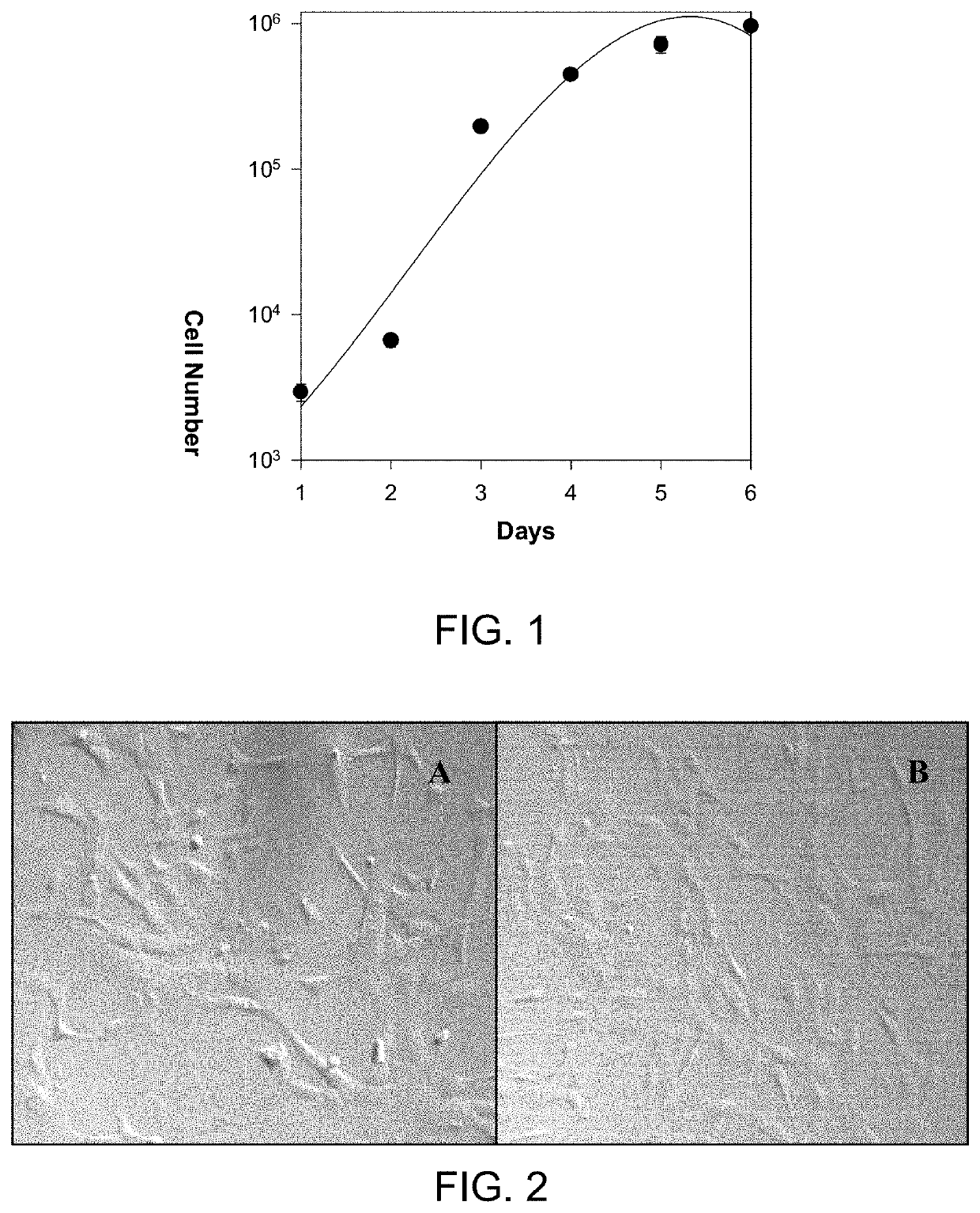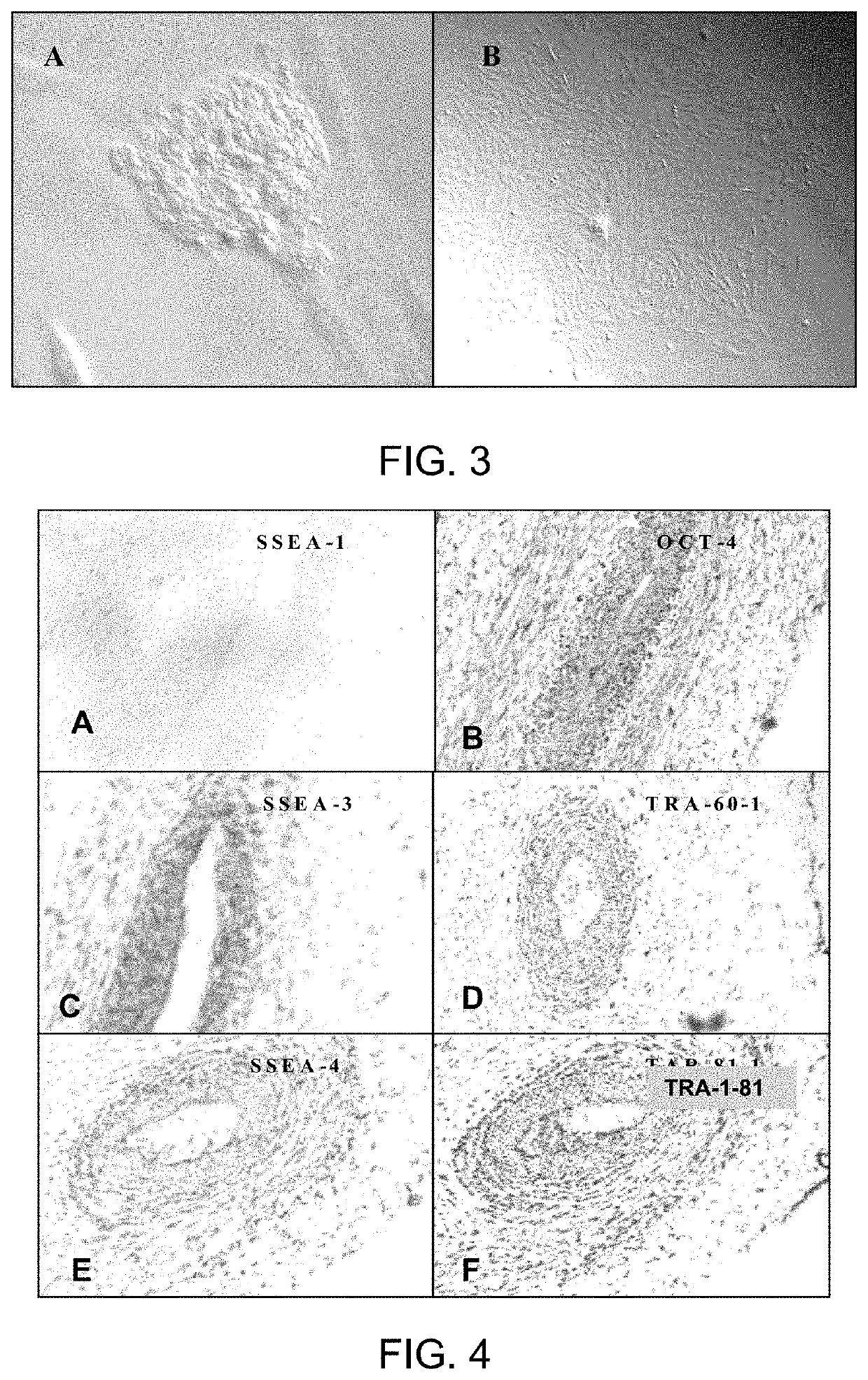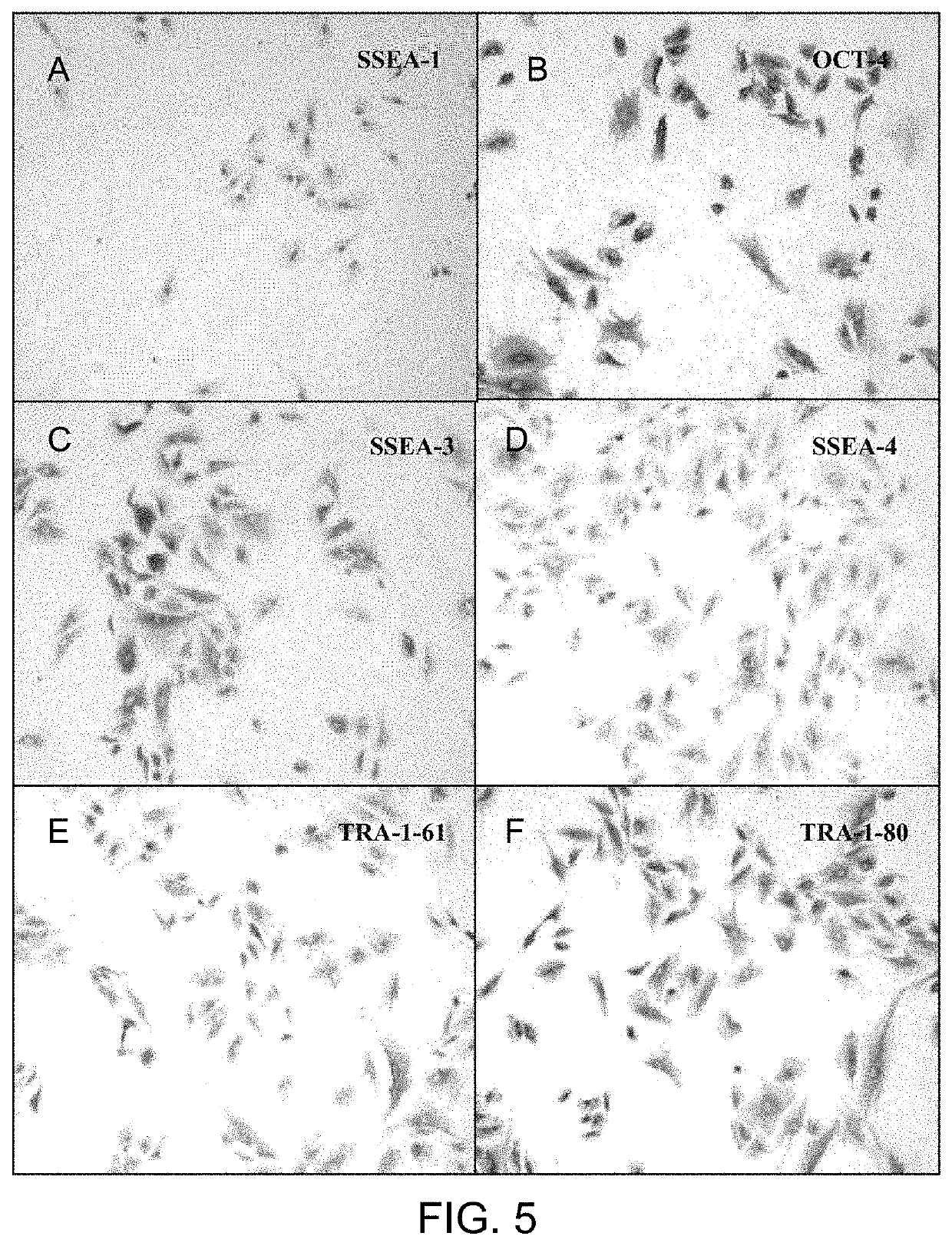Use of cells derived from first trimester umbilical cord tissue
a technology of umbilical cord tissue and stem cells, which is applied in the field of human stem cells, can solve the problems of insufficient perfusion of the heart, permanent damage to the heart tissue, and morbidity and mortality
- Summary
- Abstract
- Description
- Claims
- Application Information
AI Technical Summary
Benefits of technology
Problems solved by technology
Method used
Image
Examples
example 1
[0057]Obtaining First Trimester HUCPV cells
[0058]The following method describes obtaining first trimester human umbilical cord perivascular cells (HUPVC).
[0059]Materials—Reagents
[0060]A non-exhaustive list of possible reagents for use in the described method is provided below. Penicillin-streptomycin liquid containing 5000 U of penicillin and 5000 mg of streptomycin / mL (GIBCO; cat. no. 15070-63), aliquot and store at −20° C. Amphotericin B solution (250 μg / ml, Sigma; cat. no. A-2942), aliquot and store at −20° C. Dulbecco's phosphate-buffered saline (PBS) (+) (GIBCO™; cat. no. 14040-133), store at 4° C. Sterile water, tissue culture grade (GIBCO; cat. no. 15230-162), store at 4° C. Collagenase Type 1 (GIBCO; cat. no. 21985-023), store at 4° C. α-MEM (GIBCO; cat. no. 12571). Defined fetal bovine serum (HyClone, Logan, Utah; cat. no. 30070-03) aliquot and store at −20° C. Trypsin 0.25% / EDTA (GIBCO; cat. no. 25200-056), store at −20° C. DMSO (Sigma™, cat. no. D-5879), store at room tem...
example 2
[0084]Differentiation of First Trimester HUCPV Cells In Vitro and Expression of Tissue-Specific Markers.
[0085]Stem cells were isolated and expanded from the first trimester human umbilical cord (HUCPV), demonstrating that the cells have embryonic stem cell characteristics. These cells can express embryonic stem cell markers from passage 0 to 16 and have the ability to self-renew.
[0086]First trimester HUCPV cells were differentiated in vitro and examined for the expression of tissue-specific markers in the differentiated cells.
[0087]Methods
[0088]Perivascular cells were isolated from first trimester umbilical cords and were expanded in α-MEM containing 5-10% of FCS. These cells were grown in a suspension to induce their differentiation into EBs. EBs were transferred onto coated plates and cultured under appropriate condition. Morphology change was examined in these differentiation conditions. Dispersed EBs and differentiated cells were characterized using immunocytochemistry (ICC). RT...
example 3
[0103]Use of Early Intravenous First Trimester Human Umbilical Cord Cells in Spinal Cord Injury
[0104]Summary
[0105]This Example shows that early intravenous first trimester human umbilical cord-perivascular cell delivery after traumatic spinal cord injury significantly improves forelimb motor function and promotes weight gain. Localized vascular disruption as a result of spinal cord injury (SCI) triggers a cascade of secondary events, including inflammation, reactive gliosis and scarring that influence recovery. In addition to immunomodulatory and pathotropic properties, mesenchymal stromal cells (MSCs), including human umbilical cord matrix cells (HUCMCs), possess pericytic features. This makes MSCs ideally suited to targeting acute vascular disruption, which could reduce the severity of secondary injury, enhance tissue preservation and repair, and promote chronic functional recovery. Here, intravenous tail vein infusion of HUCMCs, first trimester human umbilical cord perivascular c...
PUM
| Property | Measurement | Unit |
|---|---|---|
| temperature | aaaaa | aaaaa |
| time | aaaaa | aaaaa |
| thick | aaaaa | aaaaa |
Abstract
Description
Claims
Application Information
 Login to View More
Login to View More - R&D
- Intellectual Property
- Life Sciences
- Materials
- Tech Scout
- Unparalleled Data Quality
- Higher Quality Content
- 60% Fewer Hallucinations
Browse by: Latest US Patents, China's latest patents, Technical Efficacy Thesaurus, Application Domain, Technology Topic, Popular Technical Reports.
© 2025 PatSnap. All rights reserved.Legal|Privacy policy|Modern Slavery Act Transparency Statement|Sitemap|About US| Contact US: help@patsnap.com



